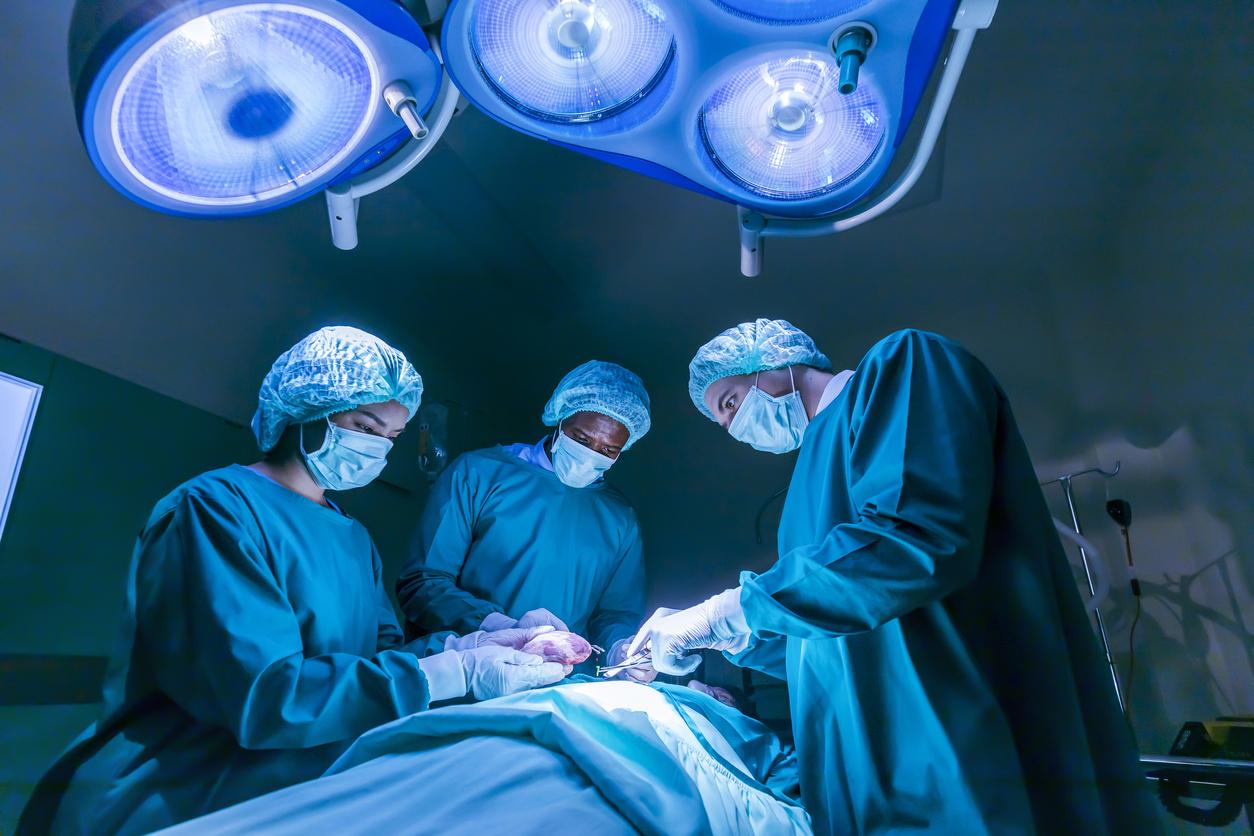First female cancer 49,000 cases of breast cancer are diagnosed each year in France. About 40% of them undergo a mastectomy, total removal of the breast to remove a tumor that is too large. Others undergo breast-conserving surgery which allows part of the breast to be kept and only the diseased part to be removed. Breast reconstruction can be “immediate”, performed at the same time as the mastectomy, or “delayed”.
“You have to keep in mind that breast reconstruction is an integral part of the treatment of breast cancer, it is not a cosmetic surgery”, underlines Camille Flavigny, contacted by Top Santé, in charge of people’s rights with the League against cancer. Breast reconstruction by prosthesis, by latissimus dorsi, by rectus or by DIEP (Deep Inferior Epigastric Perforator, in English): there are different techniques which will depend on the breasts of the woman, her skin quality, her morphology… Several interventions will be necessary, spaced several months apart.
Reconstructive surgery, too expensive for 14% of women
If it is part of the treatment, breast reconstruction is of course the choice of the patient: some need it immediately, others will prefer to wait before being operated on again, others never have recourse to it. According to the 4th report of the Societal Cancer Observatory “Breast cancer, rebuilding after a mastectomy”, “5,000 to 7,000 patients have their breasts reconstructed after a mastectomy”. Also according to this report, more than one in two women encountered difficulties in financing the remainder breast reconstruction. Worse still, 14% of them simply had to give it up for financial reasons!
As a treatment for breast cancer, isn’t breast reconstruction reimbursed 100% by Social Security? “Yes, it’s true. The disease is recognized by Social Security as being an ALD, a long-term condition. This makes it possible to have 100% coverage of the care and treatment around the pathology., explains Camille Flavigny. But there are still expenses that the patient must finance, in the first line the excess fees of surgeons and anesthesiologists… These are mainly practitioners who operate in the private sector, but some of them also work in the public, with a small part of their acts in private”, continues the project manager.
Excessive balance
In all, these are on average 1,391 euros that each patient must take out of her own pocket for breast reconstruction. A sum that includes excess fees charged by practitioners, but also travel and accommodation costs. While day surgery is more and more frequent, some women live far from the establishment where they are cared for and must themselves cover the travel and accommodation costs inherent in post-operative follow-up. “The bras adapted to each stage of breast reconstruction are also the responsibility of the patients! However, they are extremely expensive, sometimes several hundred euros, and must be changed depending on the progress of the breast reconstruction”, illustrates Camille Flavigny.
At a time of mandatory mutuals, why do so many women end up with such a high out-of-pocket burden? “Already, you have to have a mutual insurance company, which is not the case for everyone, especially unemployed people. Solidarity complementary health insurance does not cover excess fees either and if the mutual insurance company in charge, you need a well-written estimate, you have to see your health insurance before the surgery and not the other way around. That is to say, women must be well informed about the order of things. All this is better and better applied but there are still many failures and information problems. Surgeons must take their responsibilities: it is a legal obligation. In the event of exceeding fees, the quote must be clear and precise on what the fees contain and this is not always the case”, point Camille Flavigny.
A lack of healthcare at the social security rate
And even with a “normal” mutual, getting the full refund is not earned. “Mutual insurance companies do not all reimburse the same thing. When you have a doctor who practices fee overruns, the mutual insurance fund covers X%, based on the coding of the act in the Social Security nomenclature. Next the type of reconstruction, the mutuals have different reimbursement bases”. Hence the importance of getting information from your health insurance fund beforehand.
Furthermore the introduction of responsible mutual insurance contracts has not worked in favor of patients either. “These contracts differentiate reimbursements according to the doctor, whether he is contracted sector 1 or 2 and whether or not he is a member of Optam (option of controlled pricing practice). This system is supposed to encourage practitioners to lower their prices”. Because these professionals were unable or unwilling to play the game, the vast majority of practitioners who perform breast reconstruction are neither in sector 1 nor an Optam member.
Pay more to get treatment faster
Thus, when women go to public or sector 1 professionals, the waiting time can be extremely long. “70% of competent professionals are in sector 2 or are not members of Optam. As a result, there is a shortage of care offers at the rate reimbursed by Social Security”, analyzes Camille Flavigny. Should we tell these women to wait their turn at the rate reimbursed by Social Security when, for some of them, being deprived of one of their breasts is unheard of psychological violence? “For some women, without breast reconstruction, it’s as if the treatment wasn’t over. They really experience it very badly, they can’t turn the page. Sometimes it’s a psychological emergency” , continues the professional. So they turn to the private sector and pay to be treated faster.
“In addition, breast reconstruction also involves all the necessary support care, such as psychological support, physiotherapy sessions… There, again, it is very complicated to obtain reimbursements! C is the responsibility of women”, adds our expert. Some committees of the league against cancer offer this type of support free of charge for women who feel the need for it. Isolated, unemployed women from the less well-off social categories are the first to give up on reconstruction because of the excessively high remaining costs.
A severe lack of information
According to the report of the societal cancer observatory, 15% of women called on family members to pay the rest, 8% called on associations and 6% took out a loan from a bank or credit institution. “It is essential that women are better informed about these issues. Even when you are well covered, it is an incredible headache, so much so that you can miss out on care”, explains Camille Flavigny. A step forward, however, the bill voted in the Senate on March 5, 2019. “This is a bill aimed at providing information to patients on breast reconstruction in the event of mastectomy, the vote has been delayed because of the health crisis. This text is essential because out of 70% of women who do not have recourse to breast reconstruction, 60% of them feel badly or insufficiently informed, this must change”.
Sources:
- the 4th report of the societal cancer observatory.
- Interview Camille Flavigny, People’s Rights Project Manager at the League Against Cancer (June 2021).
Read also:
- Breast cancer: soon a sports bra suitable for mastectomy?
- 7 questions about hair loss during chemo
- Breast cancer: hypnosis helps relieve pain
- Metastatic breast cancer: symptoms, diagnosis, treatments

















